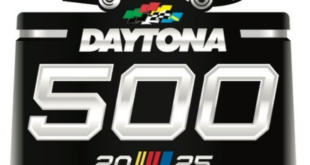Fans want more action on the track, more aggressive racing, more battles for the lead, and more desire to go after that win, that position, possibly that championship. The problem with all that is sometimes that aggressiveness is taken out on those that in reality get to be the victims no one talks about.
When Matt Kenseth pushed Joey Logano into the wall at Martinsville in 2015, he was paying him back for actions over the last couple weeks that cost him a spot in the championship battle. What people didn’t talk about is the teams had to load up both wrecked cars, go back to their respective shops, and spend hours upon hours trying to see if the chassis could be fixed up and raced again.
How about years earlier, when Ron Hornaday slid up and inadvertently put Kyle Busch in the wall at Texas, Rowdy responded by shoving him in the tailgate under caution and then into the fourth turn wall. Two trucks ruined, and one driver sidelined for the remainder of the weekend.
Both teams had to load up destroyed trucks, and spend months putting them back together to potentially race again.
There is nothing wrong with aggressive racing, but taking it out on the track in the end costs two teams positions, time, and anxiety. One payback means potentially two wrecked cars, and maybe some penalties later in the week. Kevin Harvick found this out in 2002 when he spun another truck racer, admitted it was purposely done, and got parked the following afternoon.
Maybe what’s lacking in NASCAR is exactly what we saw from Ross Chastain and Noah Gragson. Why wreck cars and make more work for the team back at the shop when everything can be settled after the race, eye-to-eye.
The first live broadcast of a NASCAR race ended with two cars wrecking, not because of anger, but desire. One block meant into the grass, and two cars ended up in the wall. But, what was talked about? Not the wreck itself, not the actual winner, but instead a few right hands between competitors.
Look at the facts, neither car had much damage at race’s end, and Gragson surely had every right to confront his fellow competitor.
He grabbed Chastain, he asked him to stop, and when he didn’t, all that happened was a man defending himself. Everyone has the right to defend themselves, and in this case rather than take it out on the track, potentially costing the teams money and hours trying to repair cars to be used later in the season. The casualty in the end may be a bad finishing position, but that was the extent of it on the track. Gragson confronted, Chastain reacted, and in the end the No. 42 driver got a jaw-jacking on live television.
Even winner Denny Hamlin said of Chastain, “He asked him to stop.”
But, rather than stop the aggression and the fights, maybe this is what NASCAR needs. Hockey lets the players scuffle until one hits the ice, so maybe NASCAR needs to allow drivers to get their emotions and aggression out on pit road so that it doesn’t lead to aggression the following week. At least, maybe to a certain point. The fact of the matter is having similar comparisons between NASCAR and the NHL is not exactly justified, but there is some items one could take from it.
We’ve seen confrontations that have led to grabbing, scuffles, shoving and blood drawn over the years. Look at Harvick-Biffle in 2002, Gordon-Keselowski in 2014, or even Hamlin-Logano just a couple years ago.
Take a few ideas from those confrontations and maybe make a set of guidelines that officials and drivers can use for future references.
For example:
- Shoving allowed up to the point of grabbing uniforms, officials overseeing the confrontation. The moment a driver/crewman tries to go for a headlock or punch, the parties are separated.
- If during the grabbing of uniforms one driver is held against the car, or the ground, and cannot defend themselves, both are separated.
- Each driver can have one swing, whether it connects or not depends on reflexes.
- If during the confrontation the parties are separated, all rules towards NASCAR officials are still enforced, including striking or showing aggression.
This is not hockey, we recognize that, but if drivers don’t release their anger, in the end it is going to result in the same thing we saw happen with Keselowski and Carl Edwards, with a car being turned at high speed and into the outside fence where they may not walk away.
Kyle Petty once said whatever happens on the race track on Sunday, that’s where it stays. On Monday, it’s over, and he moved on.
We’ve seen what happens when anger for what occurred a week, or two, or over the course of a season, can lead to. It led to NASCAR officials telling Hamlin and Harvick at Pocono to knock it off or they both would be penalized.
We have seen aggressive drivers for years, and they are not going away.
Taking a right cross to the jaw, and accepting the bruise and swelling that comes with it, is a sacrifice that sounds a lot better than being turned into the wall and going for an ambulance ride. NASCAR needs to let these drivers to a certain extent have that fight on pit road, get it out, and not let it carry over.
A few rights and lefts certainly is a smaller expense than a couple destroyed cars, and the extra repair time back in the shop.
 All About Horse Power Motorsports 24/7
All About Horse Power Motorsports 24/7



